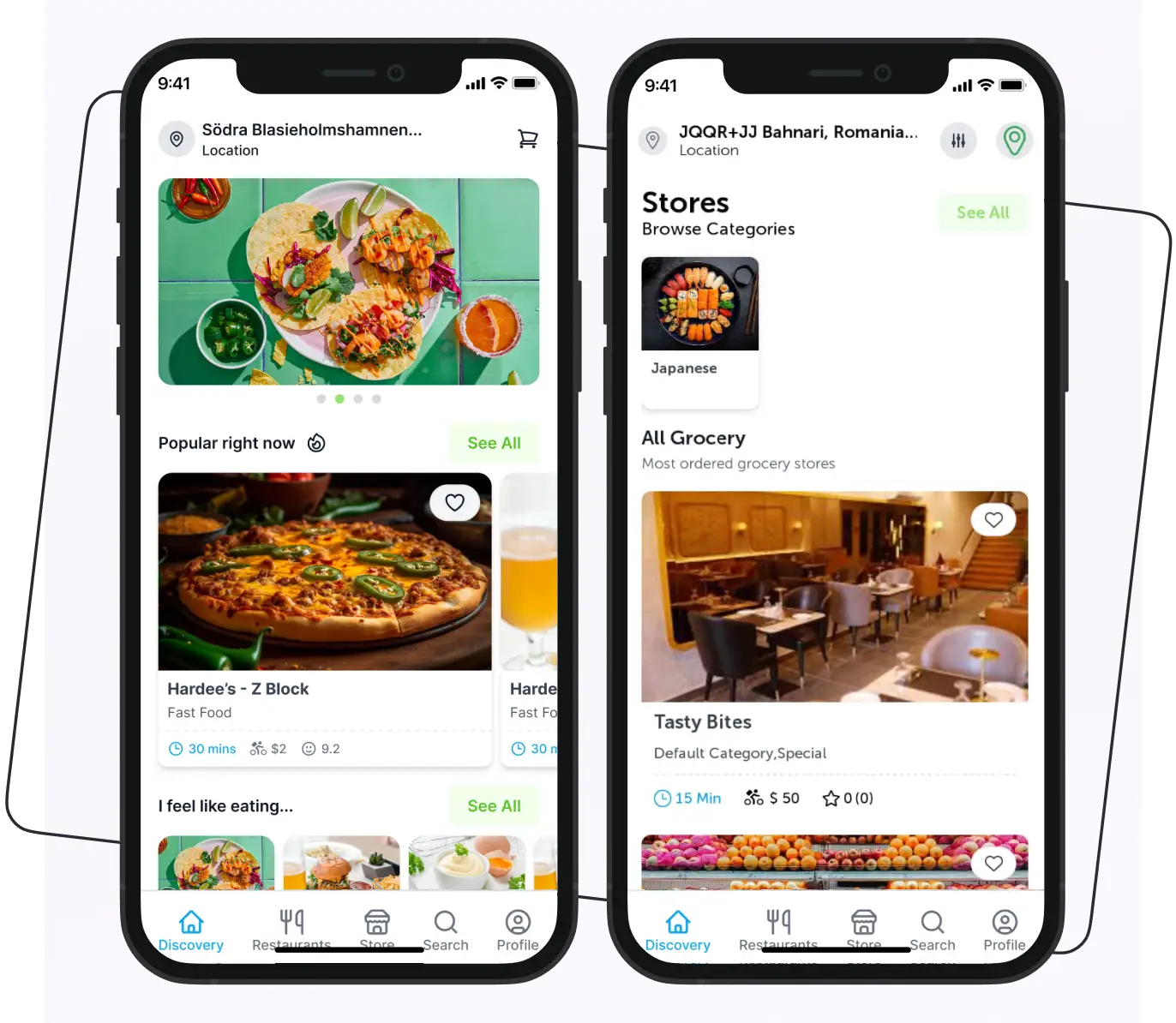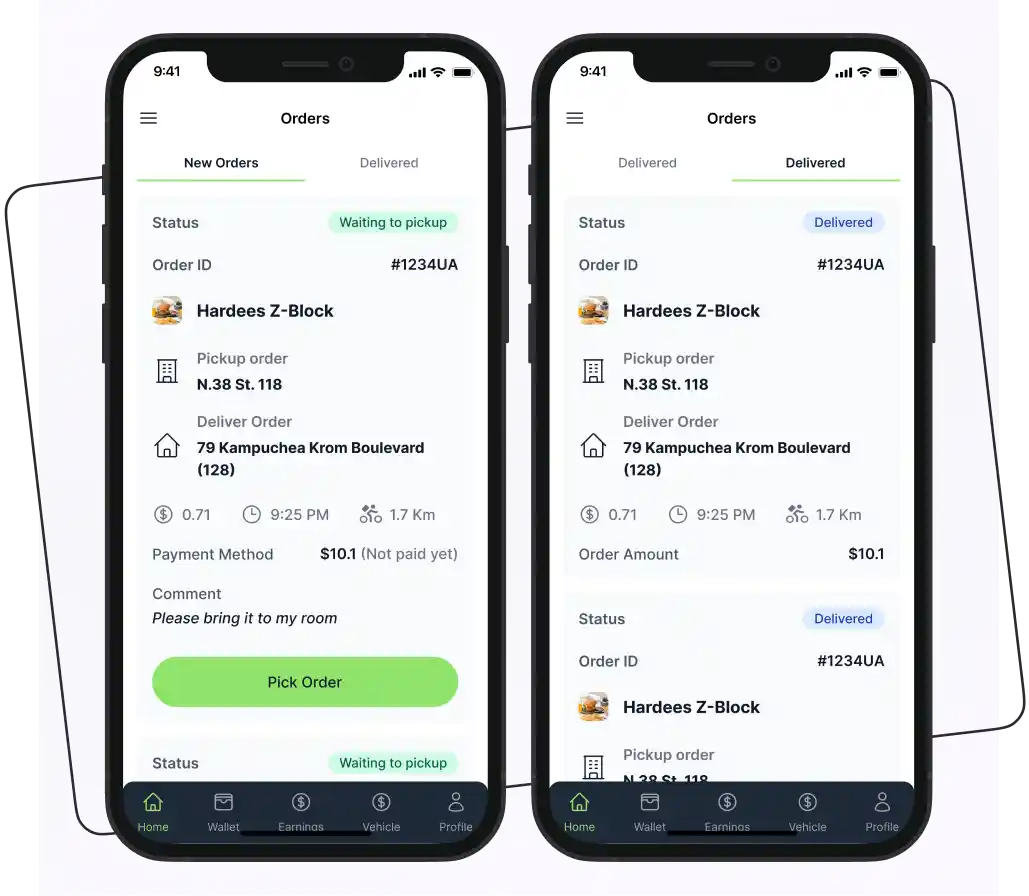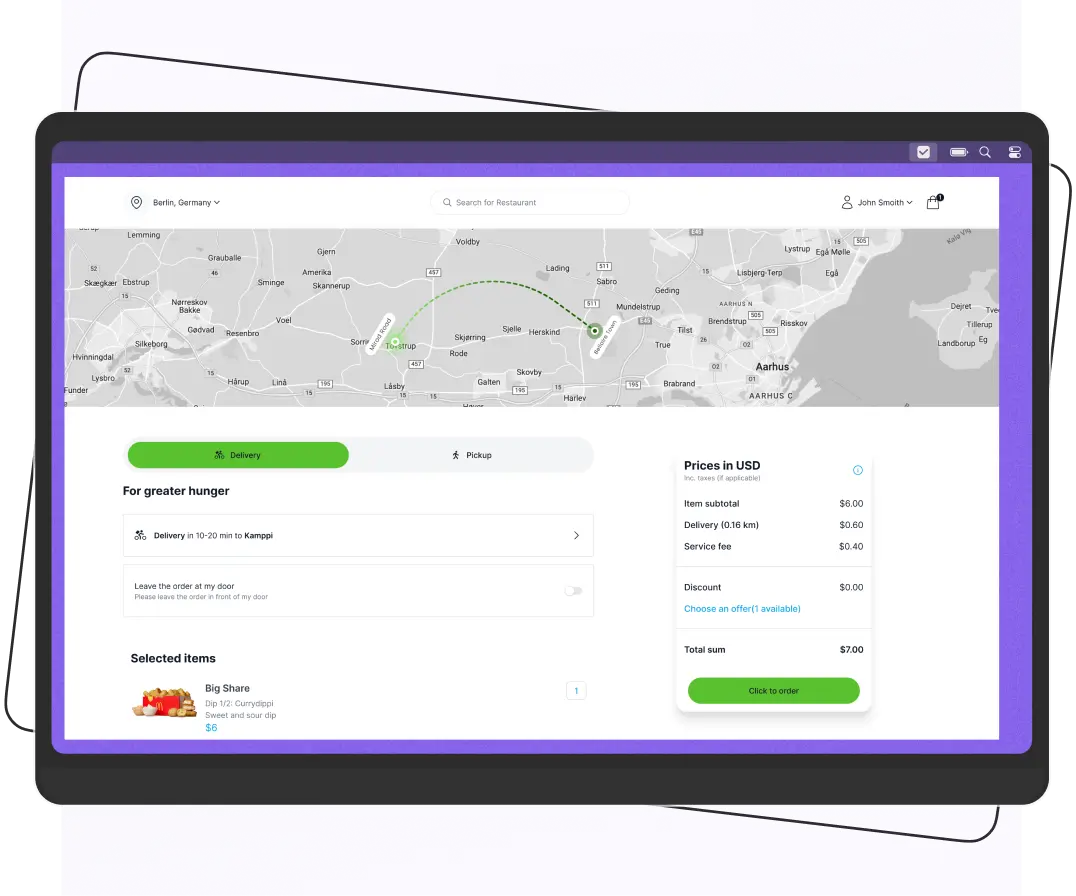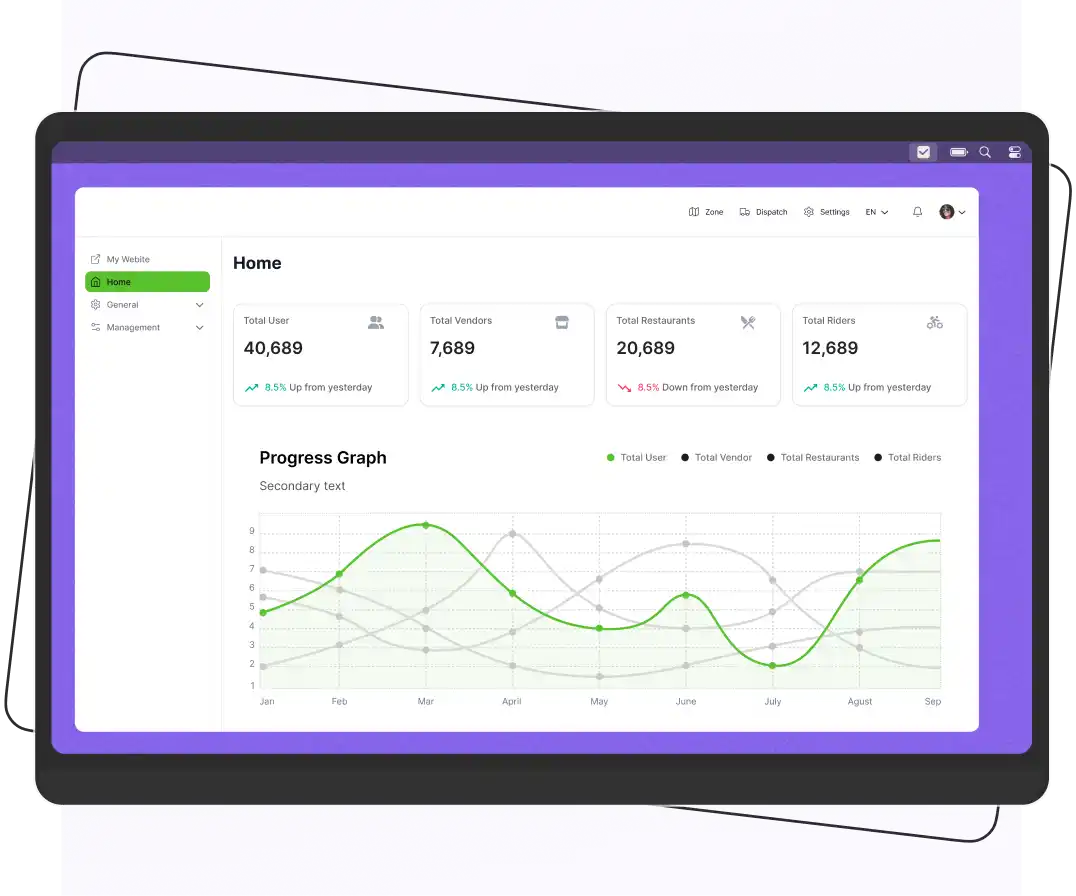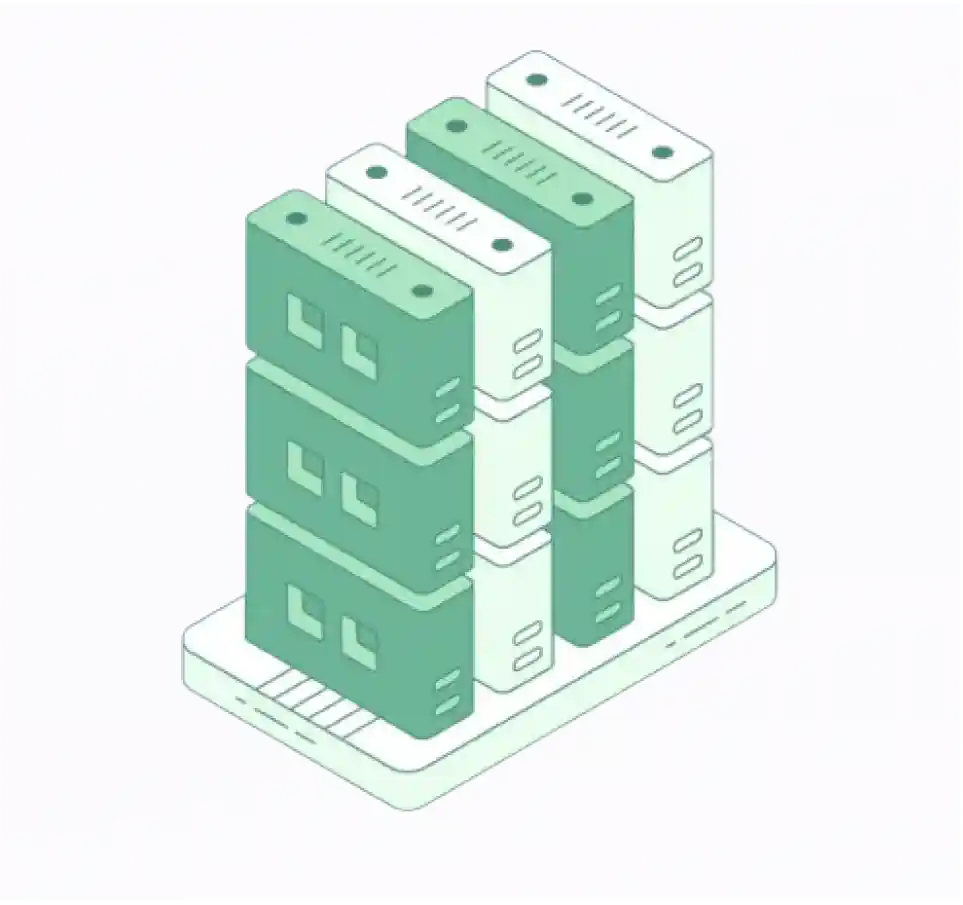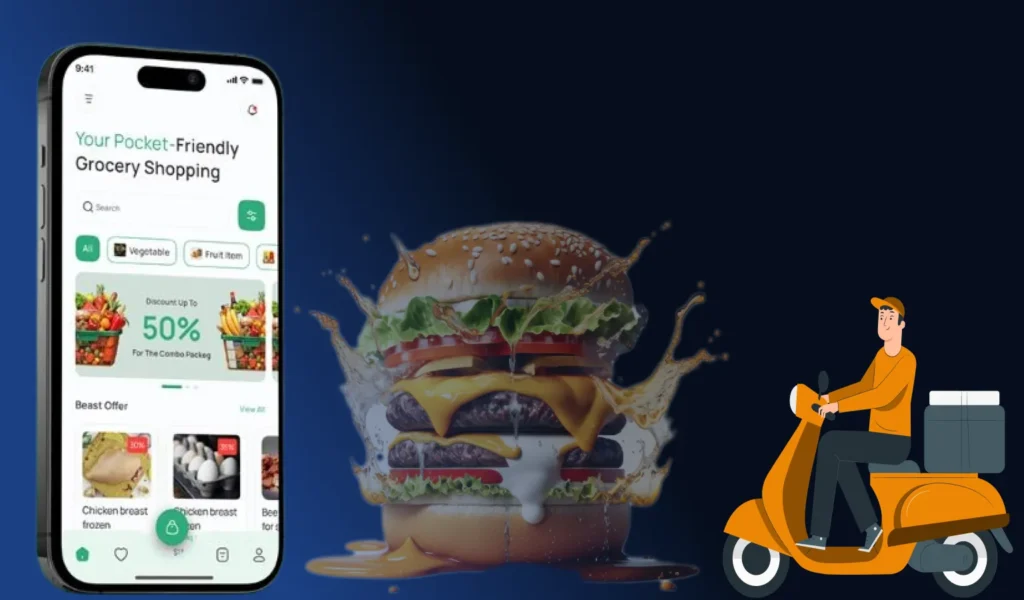
If you own a restaurant and serve tasty meals, you probably know it’s tough to grow your delivery business. With a loyal clientele, the next step is to use food delivery apps to reach more people.
These platforms have transformed the way we enjoy our favorite dishes, making it easier than ever to have food delivered right to our doorsteps.
But have you ever wondered how these ordering platforms work? The secret lies in something called an algorithm that determines how orders are placed, prioritized, and delivered.
In this blog, we’ll look at food delivery app algorithms. We’ll explore what they are, how they work, and the key components that help them run.
Supercharge your deliveries with Enatega.
Get A QuoteWhat is a Food Delivery Algorithm?
A food delivery algorithm is a set of rules used by food delivery apps to connect customers with suitable restaurants and optimize delivery processes.
The algorithm considers a variety of factors such as location, previous orders, and user preferences to recommend the most relevant and personalized restaurant options to each customer.
Additionally, these algorithms are essential for managing driver fleets, optimizing delivery routes, and even shaping pricing strategies.
Main Components of a Food Delivery Algorithm
Below are the main components of a food delivery algorithm.
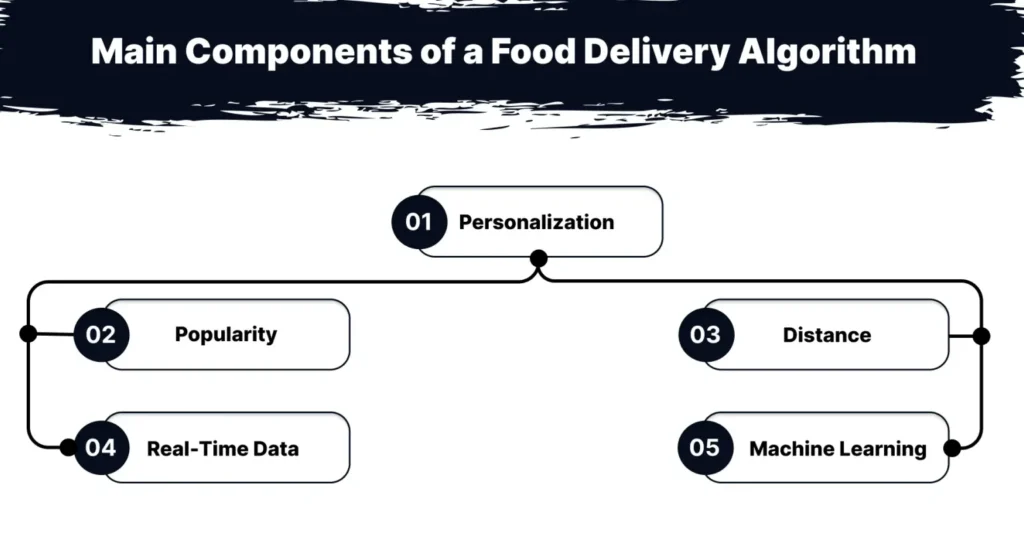
Personalization
Personalization is a first step in the algorithm. Most food delivery apps use algorithms to personalize the ordering experience for users. These algorithms consider factors like the user’s location, past orders, and preferences to show the most relevant restaurant options.
This personalization helps users browse faster and get to their cart more quickly. For example, if a customer usually orders Chinese food, the app will highlight nearby restaurants that serve Chinese food.
Popularity
The algorithm of the food ordering app prioritizes popularity, making it a key factor in determining restaurant visibility. Restaurants that receive frequent orders and has high ratings are more prominently displayed on the platform.
This approach assumes that these establishments are preferred by customers and have a higher potential for success.
Moreover, a rise in orders for a particular restaurant indicates strong customer demand, prompting the algorithm to enhance its visibility even more.
In-app advertising also significantly enhances a restaurant’s visibility. Restaurants that invest in this advertising are positioned at the top of the listings. Also, it greatly increases their chances of being noticed by customers and gives them a competitive edge.
Distance
It is another main component of the food delivery algorithms. Distance plays a vital role in food delivery algorithms, influencing search results within delivery apps.
These algorithms prioritize restaurants that are closer to customers, which enhances convenience and reduces delivery times. The primary aim of this strategy is to ensure efficient and prompt service.
Moreover, restaurants situated near densely populated areas tend to rank higher in app searches. By strategically locating their establishments and opening additional outlets in these regions, restaurants can effectively minimize average delivery distances. Also, improving their visibility and ranking on food delivery platforms.
Real-Time Data
Food delivery apps use real-time data to make their services better. For example, if a restaurant gets a lot of orders, the app can adjust its visibility in search results.
This adaptive ranking system reflects the app’s understanding that high demand may lead to longer wait times, making it less appealing for people who want fast service.
By looking at data like order numbers, delivery times, and customer reviews, the apps can highlight restaurants that are ready to serve customers quickly.
This way, customers have better options, and restaurants can manage their orders more smoothly.
Machine Learning
Food delivery apps are using machine learning (ML) and artificial intelligence (AI) to make their services better. These technologies help the apps understand what customers like to eat, their dislikes, and any dietary needs.
For example, if someone often orders from a specific restaurant, the app will show that restaurant first in the search results. It can also predict what the customer might want next based on their past orders and suggest special deals.
Moreover, ML and AI in the food industry help improve delivery efficiency. By looking at real-time traffic, weather, and past delivery data, the app can give accurate delivery times and find the best routes. This makes the experience better for customers and helps delivery drivers work more efficiently.
How Does the Online Food Delivery System Work?
Below are some steps that show how a food delivery system works.
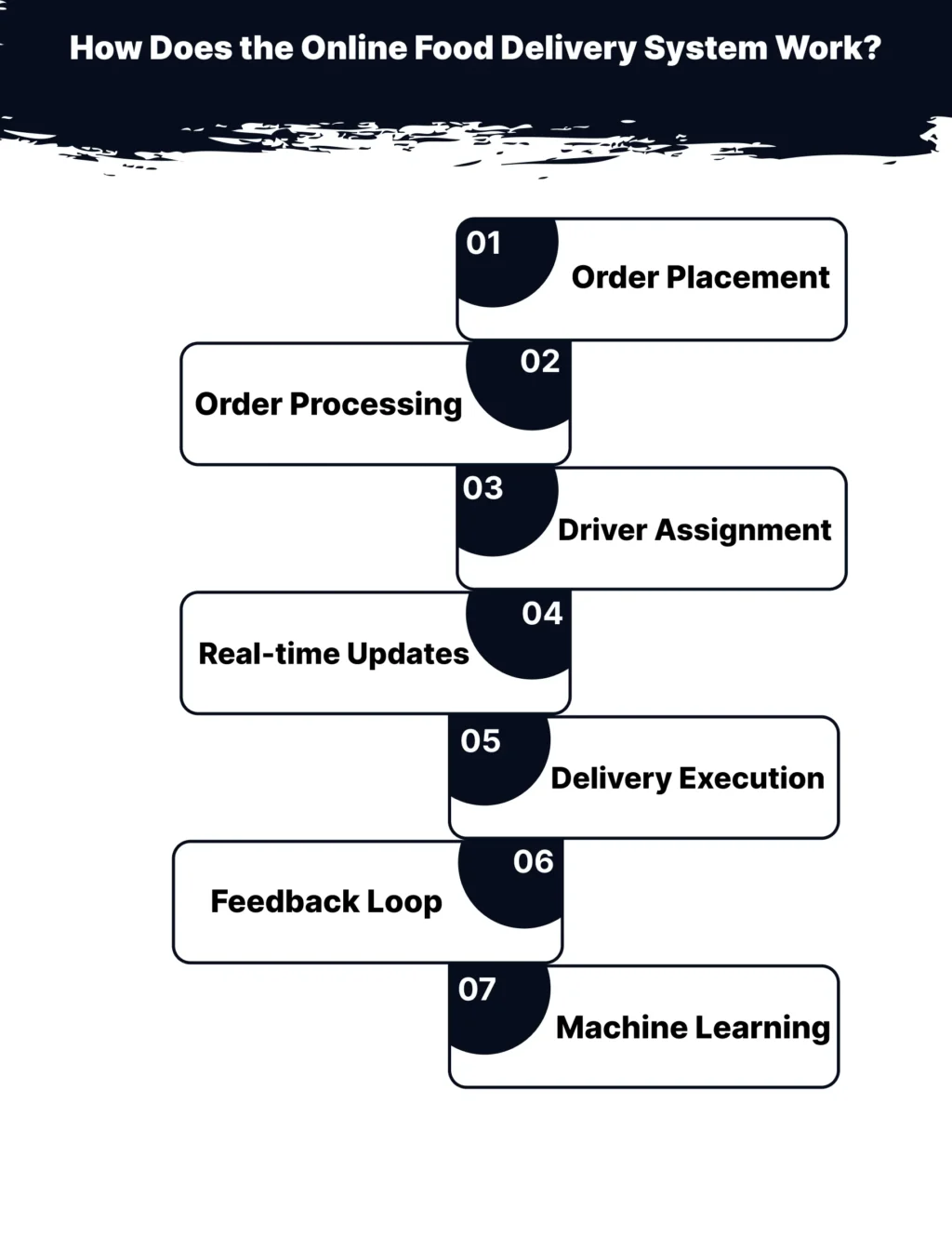
Order Placement
- User Interface: Customers place their orders through a mobile app or website.
- Data Capture: The order details, including item selection, delivery address, and payment information, are recorded.
Order Processing
- Restaurant Selection: The algorithm identifies nearby restaurants based on the customer’s location and preferences.
- Availability Check: It verifies whether the selected restaurant can fulfill the order by checking factors like operating hours and menu availability.
Driver Assignment
- Driver Availability: The system locates available delivery drivers close to the restaurant.
- Optimal Routing: It calculates the most efficient route for the driver, by considering factors such as traffic conditions, distance, and estimated delivery time.
Real-time Updates
- Order Tracking: Customers can monitor the status of their orders in real time, receiving updates as the order progresses (e.g., confirmed, being prepared, out for delivery).
- Notifications: Push notifications inform customers of any changes in order status.
Delivery Execution
- Navigation: The driver follows the optimized route provided by the algorithm to ensure timely delivery.
- Contactless Options: Many platforms offer contactless delivery to enhance safety.
Feedback Loop
- Customer Feedback: After delivery, customers can rate their experience and provide feedback.
- Data Analysis: This feedback is analyzed to improve future recommendations and driver assignments.
Machine Learning
- Personalization: The algorithm learns from user interactions to offer personalized recommendations.
- Efficiency Improvements: Continuous learning helps optimize delivery routes and reduce delivery times.
How Do These Algorithms Benefit Users and Businesses?
The table below shows how food delivery algorithms benefit users and businesses.
| Aspect | Benefits for Users | Benefits for Businesses |
| Personalization | Tailored recommendations based on past orders and preferences. | Improved customer engagement through targeted marketing. |
| Efficiency | Faster order processing and delivery times. | Optimized delivery routes reduce operational costs. |
| Accessibility | Easy access to a variety of restaurants and cuisines. | Increased visibility and reach to potential customers. |
| Order Tracking | Real-time updates on order status and delivery ETA. | Improve customer trust and satisfaction through transparency. |
| Payment Options | Multiple secure payment methods for convenience. | Manages payment processes to reduce transaction time. |
| Promotions and Discounts | Access to exclusive deals and offers. | Increased sales and customer loyalty through promotions. |
| User Interface | Intuitive apps make ordering simple and enjoyable. | A better user experience can lead to repeat business. |
| Customer Support | Improved support through automated chat features. | Reduced workload on support staff with efficient solutions. |
How Does the Uber Eats Algorithm Work?
The Uber Eats algorithm helps connect customers, delivery partners, and restaurants efficiently. It focuses on several key factors to ensure quick deliveries and a good experience for everyone involved.
Here is the process of the working of Uber Eats algorithm.
For Customers
- Distance: Restaurants closer to you show up first in search results.
- Order Preparation Time: The algorithm considers how long it takes for each restaurant to prepare food, which affects delivery time.
- Ratings and Reviews: Restaurants with higher ratings and positive feedback are prioritized.
- Popular Restaurants: Places that many people search for are given more visibility.
- Promotions: Restaurants offering discounts or deals may rank higher in the results.
For Delivery Partners
- Availability: The algorithm matches delivery partners with orders based on their location and whether they are available.
- Performance: Partners with good ratings and high order completion rates are prioritized for new deliveries.
- Increase Pricing: During busy times, the algorithm may give preference to nearby partners who can handle more orders.
- Trip State Prediction: Using machine learning, the algorithm predicts what delivery partners are doing (like parked or waiting) to find the best routes.
How Does the DoorDash Algorithm Work?
Here is the working of the DoorDash algorithm.
Order Matching
- Demand Prediction: The algorithm predicts order volume in different areas using historical data, weather conditions, and local events.
- Driver Availability: It assesses which drivers are available and nearby to fulfill orders quickly.
Routing Optimization
- Shortest Path Calculation: The algorithm calculates the most efficient route for drivers to take from restaurants to customers.
- Traffic Data Integration: Real-time traffic information is incorporated to adjust routes dynamically.
Customer Preferences
- Order History: The algorithm takes into account customer preferences and past orders to suggest restaurants and meals.
- Personalization: It tailors recommendations based on user behavior and feedback.
Restaurant Performance
- Rating System: Restaurants are rated based on delivery times, food quality, and customer feedback, influencing order assignments.
- Capacity Management: The algorithm monitors restaurant order capacity to prevent overloading.
Incentives for Drivers
- Surge Pricing: During peak hours, the algorithm adjusts pay rates to encourage drivers to accept more orders.
- Bonuses and Promotions: It offers incentives based on performance metrics and order volume.
Feedback Loop
- Continuous Learning: The system learns from past deliveries to improve future predictions and matchings.
Are All Food Delivery App Algorithms Created Equal?
No, all food delivery app algorithms are not created equal. Several food delivery platforms may rely on similar types of algorithms, such as those for route optimization or order matching, and each app has its unique implementation.
The way an app processes data, prioritizes orders, or calculates delivery times can vary from one platform to another.
For example, one app might focus on speed and efficiency, while another might prioritize customer preferences or restaurant ratings.
Additionally, factors like user interface design, customer service, and geographic data can also influence how these algorithms work in real life.
Therefore, even if the underlying technology seems similar, the specific outcomes and user experiences can differ greatly across different food delivery services.
FAQs
1. How is AI used in food delivery?
Below are some uses of AI in food delivery.
- Route optimization
- Personalized customer recommendation
- Predicting delivery times
- Managing inventory
2. Does DoorDash use an algorithm?
Yes, DoorDash uses algorithms to:
- Optimize delivery routes
- Predict customer demand
- Manage driver assignments
- Personalize recommendations for users
3. How does Uber Eats use AI?
Uber Eats uses AI for various purposes, including:
- Order Recommendations: Personalizing meal suggestions based on user preferences and past orders.
- Delivery Optimization: Analyzing traffic patterns and weather conditions to determine the fastest delivery routes.
- Demand Forecasting: Predicting which restaurants will be popular at different times to ensure adequate staffing and inventory.
- Customer Support: Using chatbots to handle inquiries and improve response times.
4. Are any food delivery apps profitable?
Many food delivery apps, including DoorDash and Uber Eats, have reported periods of profitability, particularly during peak demand times like the pandemic. However, overall profitability can fluctuate due to high operational costs, competition, and market dynamics.
Supercharge your deliveries with Enatega.
Get A QuoteConclusion
The algorithms behind food delivery apps play an important role in connecting customers with their favorite local restaurants. By using these complex systems, restaurants can improve their online visibility and attract a larger customer base.
However, in an increasingly competitive market, restaurants need to stay ahead of the curve. Developing a food delivery app can be a great opportunity, providing a unique platform tailored to your business needs.
At Enatega, we specialize in creating customized food delivery apps designed to help your restaurant grow.
Don’t miss the opportunity to improve your business. Book a free demo with us today and take the first step toward dominating the food delivery market!













 IOS
IOS Android
Android Web
Web